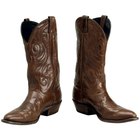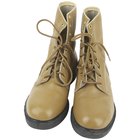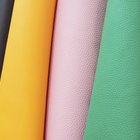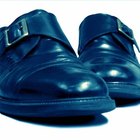
Shoe polish has been around for centuries, but was originally used to soften and waterproof leather, not polish it. During the 19th century, high gloss finishes on shoes became popular. Original polish was made from wax, oil and tallow with lanolin and beeswax being added later to achieve a shine. The modern composition is not very different, but some products have been added to improve the quality and as alternatives to other ingredients.
Wax
This is still a main ingredient in any shoe polish and is there to improve the water resistance of leather. Today these are more commonly petroleum or vegetable derived waxes, rather than the animal wax used in the past.
Naphtha
This petrochemical is a modern addition to the shoe polish mix and is separated during the fractional distillation process. It is most commonly used as a cleaning solvent, but in polish it does largely the same job as wax as it waterproofs and cleans leather. Other solvents, such as turpentine, are sometimes used. Solvent accounts for 60 percent of the ingredients in shoe polish.
Dye
A colorant is often added to shoe polish for certain shades of leather. These dyes, or colorants, are commonly chemically manufactured. Dye is not added to clear or neutral polish.
Lanolin
This greasy substance is a bi-product of sheep wool and is more closely related to wax than fat. Most lanolin is used to protect woolen clothes, but it is also added to shoe polish to protect leather.
Gum Arabic
Derived from the sap of the acacia tree, gum arabic is added to shoe polish to thicken the otherwise liquid mixture.
Related Articles

What Is Cognac Leather?

Shoe Polish vs. Waterproof Spray

How to Use Mink Oil on Boot Leather

Mink Oil vs. Shoe Polish

How to Wax Your Boots

How to Treat Timberland Boots

How to Use Kiwi Mink Oil to Waterproof ...

What Kind of Shoe Polish to Use on Frye ...

Mink Oil vs. Shoe Polish

The Manufacturing Process of Cosmetics

How to Keep Patent Leather From Peeling

How to Make Homemade Waterproofing for ...

How to Use Shoe Polish

10 Facts About Clothing in Spain

How to Care for Synthetic Leather

How to Dull a Shiny Black Shoe

How To Shine Boots With a Hair Dryer

Naked Leather Vs. Cowhide

What Is the Meaning Behind the Converse ...

How to Beeswax Leather
References
Writer Bio
Chris Rowling has been a professional writer since 2003. He has written news and features for publications covering insurance, pensions and financial markets as well as articles for local newspapers such as the "Richmond and Twickenham Times" and the "Hounslow Chronicle." Rowling graduated in 2002 from St. Mary University, London, and took a postgraduate degree in journalism.
Photo Credits
Jupiterimages/liquidlibrary/Getty Images